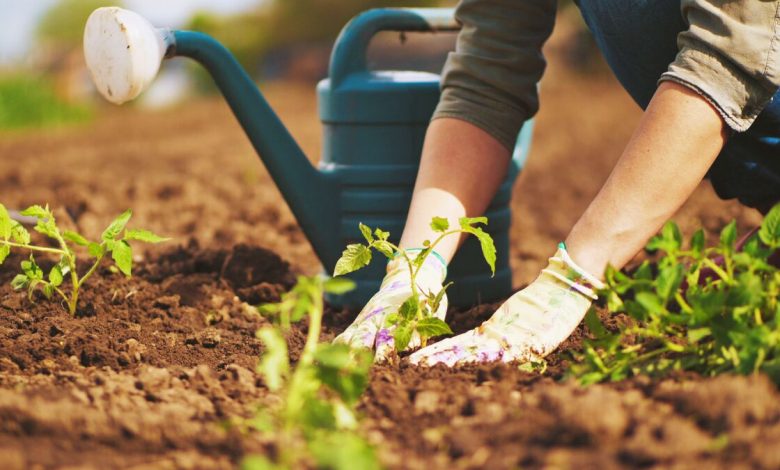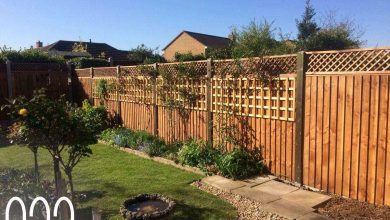Gardening Tips and Tricks: A Guide to Growing A Garden

Gardening is a great way to relax, get in touch with nature, and beautify your home. Whether you’re a seasoned gardener or just starting out, there are plenty of tips and tricks to help you grow a lush garden that will make your neighbors jealous. In this beginner’s guide, we’ll cover everything you need to know to get started with gardening.
Tips and Tricks to Start Gardening
-
Choose the Right Location:
Before you begin planting, you must determine the best site for your garden. The ideal location should get plenty of sunlight and be well-drained. If your garden is in a shaded area, consider planting shade-tolerant plants like ferns and hostas.
-
Prepare the Soil:
A thriving garden is built on healthy soil. Determine the pH and nitrogen content of your soil. Most plants flourish in soil with a pH of 6.0 to 7.0. If your soil is lacking in nutrients, add compost or organic matter to enrich it.
-
Water Your Plants Regularly:
Plants need water to grow and thrive. Make sure you water your plants regularly, especially during the hot summer months. Overwatering them, on the other hand, can cause root rot. Water your plants in the morning or evening to avoid evaporation and water loss.
-
Choose the Right Plants:
When selecting plants for your garden, choose ones that are well-suited to your climate and soil conditions. Consider the amount of sunlight and water your plants will need, as well as their size and growth habits. If you’re not sure which plants to choose, ask for advice at your local garden center.
Happy Hydro offers superior hydroponics and indoor gardening supplies such as LED grow lights, complete grow kits, grow tents, carbon filters, nutrients and more. Read Happy Hydro Review to know more in detail. 
-
Use Natural Fertilizers:
Avoid using synthetic fertilizers, as they can harm the environment and your plants. Instead, use natural fertilizers like compost, manure, or bone meal. These organic materials provide essential nutrients to your plants and help to improve soil structure.
-
Control Garden Pests Naturally:
Common garden pests like aphids, slugs, and snails can damage your plants. However, you can control them naturally without using harmful chemicals. Plant insect-repelling plants like marigolds or use companion planting to deter pests. You can also use homemade remedies like garlic spray or beer traps to get rid of pests.
-
Prune Your Plants Regularly:
Pruning your plants regularly helps to promote healthy growth and improve their appearance. Remove dead or damaged branches, as well as any branches that are crossing or rubbing against each other. This will also help to increase air circulation and reduce the risk of disease.
-
Mulch Your Garden:
Mulching your garden helps to retain moisture and suppress weeds. Use organic materials like bark chips, leaves, or straw to cover the soil around your plants. This will also help to regulate soil temperature and improve soil structure.
Types of Gardening
There are many types of gardening, each with its own unique methods and techniques. Here are some of the most common types of gardening:
Vegetable Gardening
Vegetable gardening involves growing fruits and vegetables for personal consumption. It can be done in a small backyard or even in containers on a balcony. Vegetable gardening can be a great way to provide fresh produce for your family while also reducing your grocery bill.
Flower Gardening
Flower gardening is the practice of growing flowers for their beauty and ornamental value. It can be done in a small garden or in large public parks. Flower gardening can be a fun and rewarding hobby, providing you with beautiful blooms to enjoy throughout the growing season.
Container Gardening
Container gardening is the practice of growing plants in containers, such as pots or hanging baskets. It can be done on a balcony, patio, or even indoors. Container gardening is a great option for those with limited space or for those who want to add some greenery to their living space.
Indoor Gardening
Indoor gardening involves growing plants inside a home or office. It can be done with houseplants or with specialized indoor gardening systems like hydroponics or aeroponics. Indoor gardening can provide a year-round source of fresh herbs, vegetables, and fruits.
Herb Gardening
Herb gardening involves growing herbs for cooking, medicinal or ornamental purposes. It can be done in a small herb garden or in containers. Herb gardening can be a fun way to add flavor to your meals and provide natural remedies for minor ailments.
Organic Gardening
Organic gardening is the practice of growing plants without the use of synthetic fertilizers or pesticides. It relies on natural methods of pest control and soil improvement, such as composting and crop rotation. Organic gardening can provide healthier and more sustainable produce.
Landscape Gardening
Landscape gardening involves designing and creating outdoor spaces, such as parks, gardens, and public spaces. It involves planning and implementing features like paths, seating areas, and water features. Landscape gardening can provide a beautiful and functional outdoor space for relaxation and recreation.
Garden Design Ideas
When it comes to garden design ideas, there are countless possibilities to create a beautiful and functional outdoor space. Here are some popular garden design ideas to consider:
Create a focal point: A focal point, such as a fountain or sculpture, can draw the eye and add interest to a garden. It can also serve as a centerpiece for other design elements to revolve around.
Use color: Color can be used to create a sense of harmony or contrast in a garden. Consider using a color palette that compliments the surrounding environment or choosing contrasting colors to create visual interest.
Incorporate textures: Texture can add depth and variety to a garden. Consider using plants with varying textures, such as smooth leaves or spiky foliage, or incorporating hardscaping elements like stone pathways or wooden benches.
Add layers: Layering plants can create a sense of depth and make a garden feel more full and lush. Consider using taller plants in the back of a garden bed and gradually transitioning to shorter plants in the front.
Create zones: Dividing a garden into different zones can create a sense of organization and structure. Consider creating different areas for dining, lounging, or gardening.
Incorporate lighting: Lighting can add a magical quality to a garden, especially at night. Consider using string lights or lanterns to create a warm and inviting ambiance.
Use containers: Containers can be used to add interest and mobility to a garden. Consider using different sizes and shapes of containers to create a sense of variety and playing around with different plants and flowers.
Garden pests and diseases
Common garden pests include aphids, slugs, and snails. You can control these pests naturally by using companion planting, insect-repelling plants, or homemade remedies. Diseases like powdery mildew and blight can be prevented by practicing good sanitation and proper watering techniques.
Conclusion
Gardening is a fun and rewarding hobby that can help you connect with nature and beautify your home. By following these tips and tricks, you can grow a lush garden that will impress your friends and family. Remember to choose plants that are well-suited to your climate and soil conditions, and to practice natural and sustainable gardening techniques for a healthier and more eco-friendly garden.




